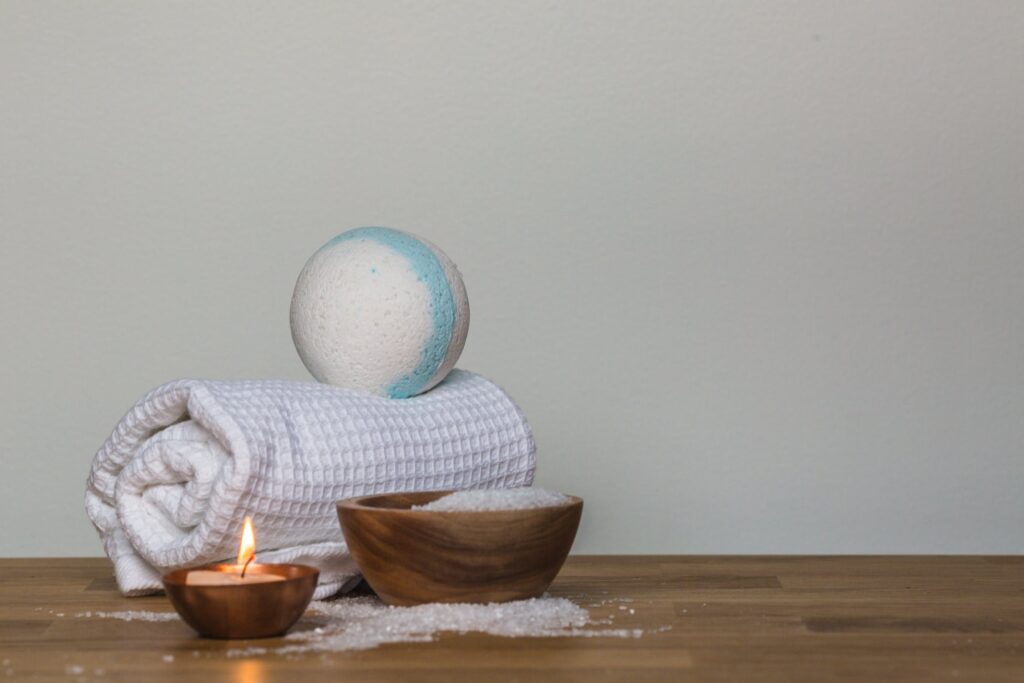You may be searching for activities that involve the least amount of effort when choosing what to do for your upcoming self-care evening. After all, that is the whole goal, right? Are you wrapping yourself in a fluffy robe and pampering yourself with an avocado face mask? Check. Enjoying a few hours of pure happiness while having someone paint your nails a nice pink color? Check. Spending quality time in a hot sauna, where the very act of sitting in the heat promotes a whole array of health and pleasure advantages, is a great way to spend some time. Should we sign up, or should we not? Keep reading to find out how much time you should consume in a sauna before it becomes harmful.
After a strenuous workout or a long day at the office, there is nothing more amazing, fulfilling, or relaxing than going to a sauna and sealing the door behind you. This lovely time allows you to relax, cleanses your body, and kickstarts your fat burning, all at the same time.
On the other hand, much like the vast majority of beneficial things, saunas have been found to have a few downsides. According to a number of studies, being in this serene environment for an extended period of time may be harmful to one's health. Everyone is left thinking, "How long should you spend in a sauna?" as a consequence of this development. Also, Portable Sauna Melbourne page has everything Portable Sauna related that you might need
This article is devoted to those readers who are interested in experiencing the exhilaration of putting their bodies through intense heat while also enjoying the therapeutic advantages of using a sauna. But before we delve into this hotly disputed topic, let's find out why going to a sauna is beneficial to your health.
FAQs About Sauna
According to the researchers, saunas are thought to improve blood vessel function, exercise capacity, even lower blood pressure for those suffering hypertension. This new study also suggests there's an even greater benefit like a lesser likelihood of death from heart attack, stroke, and other heart-related conditions.
Improves heart function: A study has shown that regular saunas may improve heart function in people with heart failure. Another study has shown that using a sauna 4-7 times a week can significantly lower the risk of sudden cardiac death and other heart diseases.
Dehydration can result from fluid loss while sweating. People with certain conditions, such as kidney disease, may be at a higher risk of dehydration. The increased temperatures can also lead to dizziness and nausea in some people.
Saunas and steam rooms are both effective for cellulite because they help reduce fat and open your skin's pores. People often develop cellulite because fat, water, and toxins collect in their skin's subcutaneous layer. The heat in a sauna helps remove toxins from your body's fat tissues, including those with cellulite.
It is a good idea to reapply the moisturizer after the sauna, when you have showered and your skin is still damp. Don't forget the hair.
Sauna for Beginners
If it's your first time in the sauna, you should probably begin on one of the lower benches. Utilizing the higher benches, which are typically hotter, for intense but brief bouts of sweating is the most efficient method for experienced sauna users. Before you exit the sauna, you need to adjust your circulation to an upright posture by sitting on the lower benches for about two minutes. This will allow your muscles to relax and your blood to flow more freely. After being exposed to heat, it is necessary to take a chilly shower for the best possible health benefits, and then, for experienced sauna goers who do not have high blood pressure, a dip in the freezing water of a diving pool is recommended.
During your time in the sauna, please keep in mind that your health and well-being are the most essential considerations. It is imperative that you exit the sauna immediately and allow your body to rest if you are not feeling well or have other symptoms.
A trip to the sauna typically consists of three separate sessions, however, this number might vary depending on the individual and their state of health. In the event that one goes to the sauna more than once a week, the amount of time spent in the sauna should be cut down in order to avoid putting unnecessary strain on the body.
Why You Need A Sauna Visit
Your Body Recovers Faster After Workout
You've just performed a particularly strenuous set of sit-ups, and the pain in your abdominal muscles is now so strong that you can't even bend over to untie your shoelaces. What gives? The good news is that having those muscles softened up could be able to assist ease some of the soreness. This can be extremely uncomfortable. Even fortuitous for you is the fact that you won't require the services of the neighborhood sauna facility if you have a sauna built inside your home. Step one is to put on your swimsuit, step two is to enter the sauna, and step three is to leave the rest up to the heat or the steam.
As your body temperature rises, your muscles will begin to relax, and your blood vessels will widen. This results in an increase in the circulation of blood that is rich in nutrients, which provides your muscles with the energy they require to resist the pain.
You Detox Your Body
Spending time in a sauna causes your body to release sweat. The extreme heat causes your sweat glands to create significantly more perspiration than they would when you are working out with weights or running on a treadmill. Your body is more effectively ridding itself of potentially dangerous substances as a result of your excessive perspiration.
You Calm Your Mind And Minimize Stress
There is a good chance that you will be alone yourself in the sauna room. In each and every instance, sauna rooms are calm, quiet, and free from any potential sources of distraction. As a result, you will have the opportunity to meditate, which will help you to quiet your mind and your spirit.
The heat that is produced by the equipment within the sauna causes stimulation the production of endorphins, which are hormones connected with feelings of happiness and overall well-being. These things produce a pleasurable effect as well as a thrilling one, which causes one to think about nothing except the present moment. You get the chance to relax, concentrate, and critically think, which is exactly what you require in order to alleviate stress.
In addition, the increased temperatures speed up the delivery of blood to all of your body's organs, including the brain. This rejuvenates your brain, returns it to its normal state of operation, and improves its overall health.
These are only some of the well-documented health advantages attributed to the use of steam and infrared saunas. In point of fact, there is a great deal (relative to one's health) that one may do by simply spending a short amount of time in a heat or steam chamber. You will leave the room with glowing skin, you will have increased your cardiovascular performance, and you will have burned calories. Using a sauna on a regular basis can help you maintain a healthy body and get you to your fitness plan much more quickly.
Is It Unhealthy to Use a Sauna After a Workout?
After a strenuous workout, members can use the sauna at a lot of different health clubs and fitness centers to help them rest and decompress. When utilized properly, the dry heat of a sauna has many positive effects on one's health, but it also has the potential to inflict serious injuries. Check out Portable Sauna Melbourne specialists in providing solutions to your problem.
After a strenuous workout, it can be relaxing and beneficial to use a sauna as long as safety precautions are observed and adequate fluid intake is maintained.
How Hot Is It?
Harvard Health states that a conventional sauna is warmed to a temp of 185 ℉ at the peak of the room and 90 degrees at the foot level. The humidity levels are quite low, ranging from 10 to 20 percent, contributing to the dry heat.
The air may be recirculated anywhere from three to 8 times every hour in a sauna, depending on its reputation. According to the School of Public Health at the University of Wisconsin, conducting the exercise and then going to a sauna after your workout will help you relax and ease any painful muscles that resulted from your workout.
Weight Loss Myth
The idea that spending time in a sauna will result in weight loss is a myth that persists despite being debunked repeatedly. Although it might make sense to think that elevating your body temperature would help you lose fat, this is not actually the case.
If you've been sitting in a sauna and have noticed a dip in your weight after leaving, it's likely because you've lost some water weight due to the intense heat. As soon as you give your body what it needs to restore its fluid balance, you will put on weight again.
Dehydration Is a Risk
When you enter a sauna, your body uses sweating as a mechanism to both cool itself and keep its core temperature stable. When you stay in a sauna for a longer period of time, you will shed more water. A session in the sauna can accelerate the process of becoming dehydrated if you have already been perspiring heavily due to your workout. Sweating causes your blood vessels to dilate, which in turn leads to a reduction in blood pressure.
After some time, your body will lose the ability to adequately cool itself, and you will notice that your internal temperature is beginning to rise. The North American Sauna Society claims that some sportsmen have used a sauna to fast reduce weight by sweating. Unfortunately, this practice has led to the sudden death of some athletes as a result of heatstroke, while it has also put others at risk of premature cardiac death.
How to be Safe
In order to avoid becoming dehydrated, it is important to consume a large amount of water both after training and before entering a sauna. Before you enter, make sure that your body has had time to recover from your workout and that you only stay in the heat for a maximum of 15 minutes.
You should get out of there immediately once if you start to feel sick or dizzy, and you should never use the sauna alone; you should always have someone else there in case you get too hot and need help. To reduce the risk of contracting a fungal infection while utilizing a public sauna, it is recommended that you bring a towel and shower shoes with you. . Looking for Sauna Melbourne? Look no further, Portable Sauna has you covered.
The Mayo Clinic came to this conclusion after doing research on the health advantages of sauna bathing and finding that patients with stable cardiovascular disease may benefit from owning their own sauna.
If you are pregnant, have heart disease, uncontrolled hypertension, or epilepsy, or if you are using antibiotics, stimulants, or tranquilizers, you should not use a sauna until you have received clearance from your primary care physician to do so. Using a sauna while under the effect of alcohol is also not a recommendation under any circumstances.
The Positive Effects of a Sauna on Your Health.
The risk of dying from cardiovascular disease and all causes was found to decrease in direct proportion to the number of times persons visited saunas. The incidence of dementia was reduced by 66% in individuals who attended the sauna at least four times weekly compared to those who visited once per week. In addition, regular sauna use has been demonstrated to alleviate the inflammation and pain associated with arthritis.
Added bonus? Regular exercise has many health benefits, but using a sauna may increase them even further. The study's authors concluded that sauna use, in addition to a normal aerobic exercise routine, provides further protection against cardiovascular disease.
How Saunas Boost Efficiency
Aside from the obvious health benefits, taking a sauna bath can boost performance, even for the highly skilled. One study had a select group of highly trained endurance runners relax in a sauna for 30 minutes following their daily, weekly, and biweekly workouts. A 32 percent increase in their performance on a run-to-exhaustion test was the consequence, and a three-week decrease in their time for a five-kilometer race resulted in a two-percent improvement in their overall time.
You can take advantage of the benefits of a sauna bath at any time. Yet, before hitting the gym, some folks like a pre-workout sauna session to get their muscles nice and toasty. While this will assist get you in the zone, it shouldn't take the place of a proper warm-up. The sauna is best used after a workout, when you're already slightly dehydrated. Perhaps this is the best way to maximize the sauna's benefits.
You have a lower blood volume than usual when you're even mildly dehydrated. To protect itself from overheating in a hot setting like a sauna, the human body sends blood to the skin to cause perspiration.
Since there is only so much blood to go around, the kidneys encourage the production of EPO (yes, the performance-enhancing substance) and plasma volume, which both increase your blood volume and, by extension, your performance.
The Benefits of Sauna Bathing for Exercise Performance
Is there a chance that you might give it a shot? The advantages of using a sauna are as described below.
Going to the sauna seven days in a row has been shown to have the most beneficial effects. Starting out, you may only be able to do the activity for 5–10 minutes, but by the seventh day, you should be able to do it for 25–30 minutes.
It's probable that women might benefit most from a "heat primer" when trying to adapt to the sauna because of the hormonal cycles that cause them to have different thermoregulatory thresholds. Hence, they may want to try the sauna for a maximum of 10 minutes at a time, followed by a five-minute rest outside, and then another twenty or thirty minutes inside.
Since utilizing the sauna raises your resting heart rate to roughly 140 beats per minute, you should avoid doing any particularly taxing activities during the same week. Schedule your workouts such that you put more emphasis on recovery or endurance to prevent overtraining.
Generally speaking, it's best to hit the sauna no more than half an hour after your workout is over. You should make every effort to abstain from drinking during these thirty minutes; you can have your protein recovery drink, but no other fluids; as an alternative, you may try pouring some water over your neck to cool down. This is because some degree of dehydration is necessary for the adaptations that are necessary for this method.
Once you're done with the sauna, it's best to drink water slowly over the next three hours to replace all the fluids you lost. Sims claims that if you drink a lot of the mixture right after a sauna session, your kidneys won't have time to respond negatively to the heat. It's recommended that you take a warm shower immediately following, and that you wait at least 10 minutes before switching to a colder shower. Feeling lightheaded is a common reaction to extreme temperature changes.
Healthy people should not risk their health by taking a sauna bath. But, if you experience any aches in your muscles or joints when at rest or while engaging in the light activity, you should not use it. The same holds true if you've recently consumed alcohol or have bruises or sutured wounds; these conditions may increase your risk of a heart attack or stroke. Therefore, you should always use your best professional judgment and get out of the situation as soon as possible if you feel uncomfortable.
How Long Would You Say It’s Too Long to Leave the Sauna?
Because of the extensive effects of high temperature on the body, many other problems arise. Your blood pressure is fluctuating, your heart rate is increasing (your pulse may increase by 30 percent or more, doubling the volume of blood it pumps each minute), and you are sweating excessively. Take all precautions, but try to limit your time spent indoors as much as possible.
Can you stay in a sauna for an hour without getting sick? It's important to think about ways to prepare for the heat, and one of the first is to build up a tolerance. If you've never been to a sauna before, you shouldn't try to stay in there for as long as 30 to 45 minutes (this duration should be lowered for individuals with health conditions like high blood pressure). Develop your tolerance instead. Experts advise starting with 10- to 15-minute bursts of exercise, taking care to rehydrate afterward, and building up to longer workouts over time.
Sauna time limit
Most locations don't enforce limited time. There is not a safety monitor standing inside the sauna waiting to blow her whistle and warn you that your thirty minutes are up when you get to the end of your session. Instead, you should time yourself and look for signs inside the spa or gym that indicate how long you are allowed to spend there.
First and foremost, you should pay attention to your body. Even though you might have the intention of working out for a longer period of time, you should take a break if you begin to experience symptoms such as lightheadedness, dizziness, or extreme overheating. Take some time off to give your body a chance to restore to its usual temperature, and if you still don't feel completely at ease, you can try again. Another perk of using a sauna is the opportunity to catch up with a friend in peace and quiet. If you want to make the most of this perk, consider inviting a companion along with you.
Spending time in a sauna can be both pleasant and beneficial to your health; however, sessions should be limited to no more than 60 minutes at a time. You won't have to wait long before you notice the positive effects.
How Long Is Too Long To Sit In A Sauna?
So how long is a safe amount of time to spend in a sauna?
A quick answer: not for a significant amount of time.
Having said that, a session needs to go on for a minimum of ten minutes. If you want to get the most out of your time spent in a sauna, you need to make sure that your pores are entirely unblocked and that your blood vessels are properly expanded. This, however, will only be achievable if your body is able to withstand a certain amount of heat.
Your general health will improve as a result of the increased body temp and rate of perspiration, as poisonous substances will be brought to the surface, your metabolism will be boosted, and you will have better overall health. To reiterate, this can only be accomplished by exposing your body to the heat of the sauna for an extended period of time.
In most cases, the time range of ten to fifteen minutes is suggested. Your muscles will gain strength without being overworked in the process.
However, the length of time that you spend in that room will be determined by a number of factors, including how frequently you use a sauna, where you sit, and how comfy you are.
How Long Should You Sit in a Sauna if You Are a Beginner?
If this is your first time working out in heat or steam, you shouldn't spend more than ten minutes at a time in either environment. As your body becomes accustomed to the practice, you should gradually lengthen the time you spend there to anywhere between ten and fifteen minutes.
If the sauna has more than one bench, you can experiment by moving between the lower and upper levels to locate the one that gives you the most pleasant temperature. However, if you are a seasoned user, you can utilize the hotter benches (located higher up) to induce a more intense sweating response. However, once you are finished with the sessions, you should be sure to sit on the benches that are located lower down so that your body can acclimate to the new environment.
However, the majority of establishments that operate infrared saunas permit sessions of up to thirty minutes in length. This is due to the fact that humans are better able to tolerate infrared heat than steam heat.
Traditional steam saunas reach extremely high temperatures and heat the air all around you to create the sensation of being in a cloud of steam. The process of sweating begins when the body reacts to the higher temperature in its environment by producing more perspiration. Due to the fact that not everyone is able to tolerate this temperature, there aren't very many people who are able to make it through more than the first 15 minutes of the practice.
On the other side, infrared saunas heat your body through exposure to infrared light rather than traditional steam. This, in contrast to its steam equivalent, causes you to sweat more by directing the red light straight into your body, which promotes the sweating effect. Because there is no steam that goes to warm the air around you, you will perspire more even though the temperature is lower than normal. This is one of the factors why a lot of people are able to confidently complete a session that lasts for thirty minutes.
The majority of infrared saunas will simply have a single bench level, and the heat will be delivered uniformly around the room. You are responsible for setting the timer on these saunas to the length of session that is most effective for you; however, as we have previously mentioned, if you are just getting started, we recommend sticking to the shortest time possible and working your way up to longer periods as you gain more experience.
It doesn't matter if you're using a portable sauna that you've set up in your own house or the one at the fitness center down the street: the length of time you spend in the sauna can have both a beneficial and a bad effect on you. Because of the potential risks to your health, your body was not designed to withstand extreme temperatures for an extended period of time. Therefore, try to keep your workouts as brief as possible while still getting the most out of them.
Be sure to have plenty of water before you leave, keep an eye out for any signs of pain, and if you have any condition that affects your heart, consult your primary care physician for guidance. Also, keep in mind that saunas are not an effective treatment for hangovers, so after a night of drinking, this is not the environment in which you should be.
Conclusion
Sauna for beginners is beneficial to health and pleasure, but can also be harmful, so it is important to consider how much time to spend before it becomes harmful. Sauna visits can help your body recover faster and detoxify your body by increasing the circulation of blood that is rich in nutrients. Spending time in a sauna can help reduce stress, calm the mind, increase cardiovascular performance, and burn calories. Saunas can be relaxing and beneficial after a strenuous workout, but should be used with safety precautions and adequate fluid intake. Dehydration is a risk, and some sportsmen have used a sauna to fast reduce weight.
Saunas can have positive health benefits, such as reducing the risk of dying from cardiovascular disease and dementia, reducing the incidence of dementia, and reducing inflammation and pain associated with arthritis. Sauna bathing can boost performance by increasing EPO and plasma volume, but it is best used after a workout when you're already slightly dehydrated. Healthy people should not risk their health by taking a sauna bath, especially if they have recently consumed alcohol or have bruises or sutured wounds. How long is too long to sit in a sauna? Experts recommend starting with 10- to 15-minute bursts of exercise, taking care to rehydrate afterward, and building up to longer workouts over time.
The most important details are that a session should go on for a minimum of ten minutes, and that your body should be able to withstand a certain amount of heat. The length of time spent in a sauna can have both a beneficial and a negative effect on your health, so it is important to stick to the shortest time possible and work up to longer periods as you gain experience.
Content Summary
- You may be searching for activities that involve the least amount of effort when choosing what to do for your upcoming self-care evening.
- Spending quality time in a hot sauna, where the very act of sitting in the heat promotes a whole array of health and pleasure advantages, is a great way to spend some time.
- Keep reading to find out how much time you should consume in a sauna before it becomes harmful.
- On the other hand, much like the vast majority of beneficial things, saunas have been found to have a few downsides.
- According to a number of studies, being in this serene environment for an extended period of time may be harmful to one's health.
- But before we delve into this hotly disputed topic, let's find out why going to a sauna is beneficial to your health.
- Sauna for beginners
- If it's your first time in the sauna, you should probably begin on one of the lower benches.
- Before you exit the sauna, you need to adjust your circulation to an upright posture by sitting on the lower benches for about two minutes.
- It is imperative that you exit the sauna immediately and allow your body to rest if you are not feeling well or have other symptoms.
- Step one is to put on your swimsuit, step two is to enter the sauna, and step three is to leave the rest up to the heat or the steam.
- Spending time in a sauna causes your body to release sweat.
- Using a sauna on a regular basis can help you maintain a healthy body and get you to your fitness plan much more quickly.
- Weight Loss MythThe idea that spending time in a sauna will result in weight loss is a myth that persists despite being debunked repeatedly.
- The North American Sauna Society claims that some sportsmen have used a sauna to fast reduce weight by sweating.
- In order to avoid becoming dehydrated, it is important to consume a large amount of water both after training and before entering a sauna.
- Before you enter, make sure that your body has had time to recover from your workout and that you only stay in the heat for a maximum of 15 minutes.
- If you are pregnant, have heart disease, uncontrolled hypertension, or epilepsy, or if you are using antibiotics, stimulants, or tranquilizers, you should not use a sauna until you have received clearance from your primary care physician to do so.
- Regular exercise has many health benefits, but using a sauna may increase them even further.
- Aside from the obvious health benefits, taking a sauna bath can boost performance, even for the highly skilled.
- You can take advantage of the benefits of a sauna bath at any time.
- The sauna is best used after a workout, when you're already slightly dehydrated.
- The advantages of using a sauna are as described below.
- Going to the sauna seven days in a row has been shown to have the most beneficial effects.
- Generally speaking, it's best to hit the sauna no more than half an hour after your workout is over.
- Once you're done with the sauna, it's best to drink water slowly over the next three hours to replace all the fluids you lost.
- Sims claims that if you drink a lot of the mixture right after a sauna session, your kidneys won't have time to respond negatively to the heat.
- But, if you experience any aches in your muscles or joints when at rest or while engaging in the light activity, you should not use it.
- How Long Would You Say It's Too Long to Leave the Sauna?Because of the extensive effects of high temperature on the body, many other problems arise.
- Can you stay in a sauna for an hour without getting sick?
- It's important to think about ways to prepare for the heat, and one of the first is to build up a tolerance.
- Develop your tolerance instead.
- First and foremost, you should pay attention to your body.
- Another perk of using a sauna is the opportunity to catch up with a friend in peace and quiet.
- How Long Is Too Long To Sit In A Sauna?So how long is a safe amount of time to spend in a sauna?A quick answer: not for a significant amount of time.
- Having said that, a session needs to go on for a minimum of ten minutes.
- To reiterate, this can only be accomplished by exposing your body to the heat of the sauna for an extended period of time.
- On the other side, infrared saunas heat your body through exposure to infrared light rather than traditional steam.
- It doesn't matter if you're using a portable sauna that you've set up in your own house or the one at the fitness center down the street: the length of time you spend in the sauna can have both a beneficial and a bad effect on you.
- Therefore, try to keep your workouts as brief as possible while still getting the most out of them.






